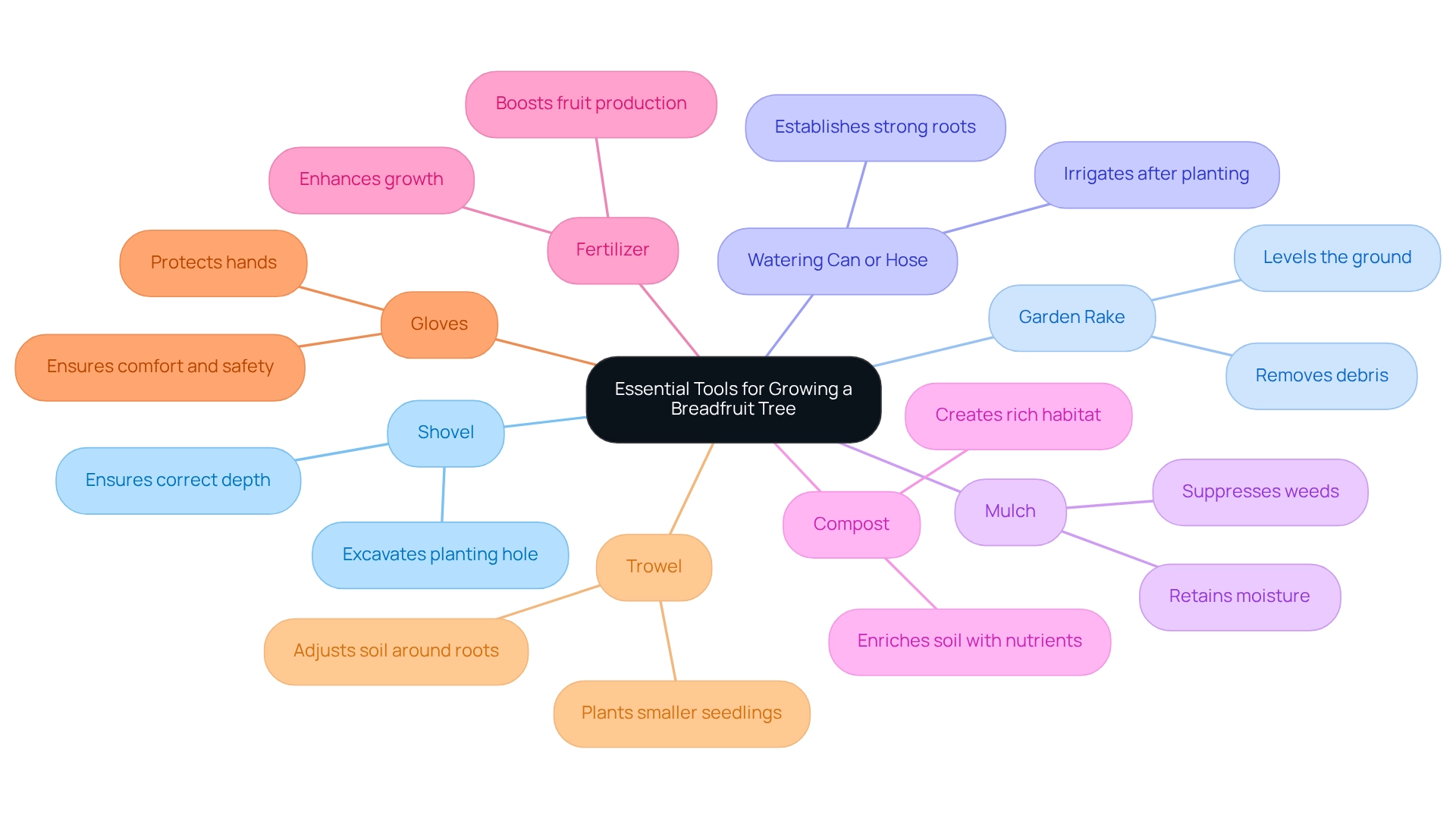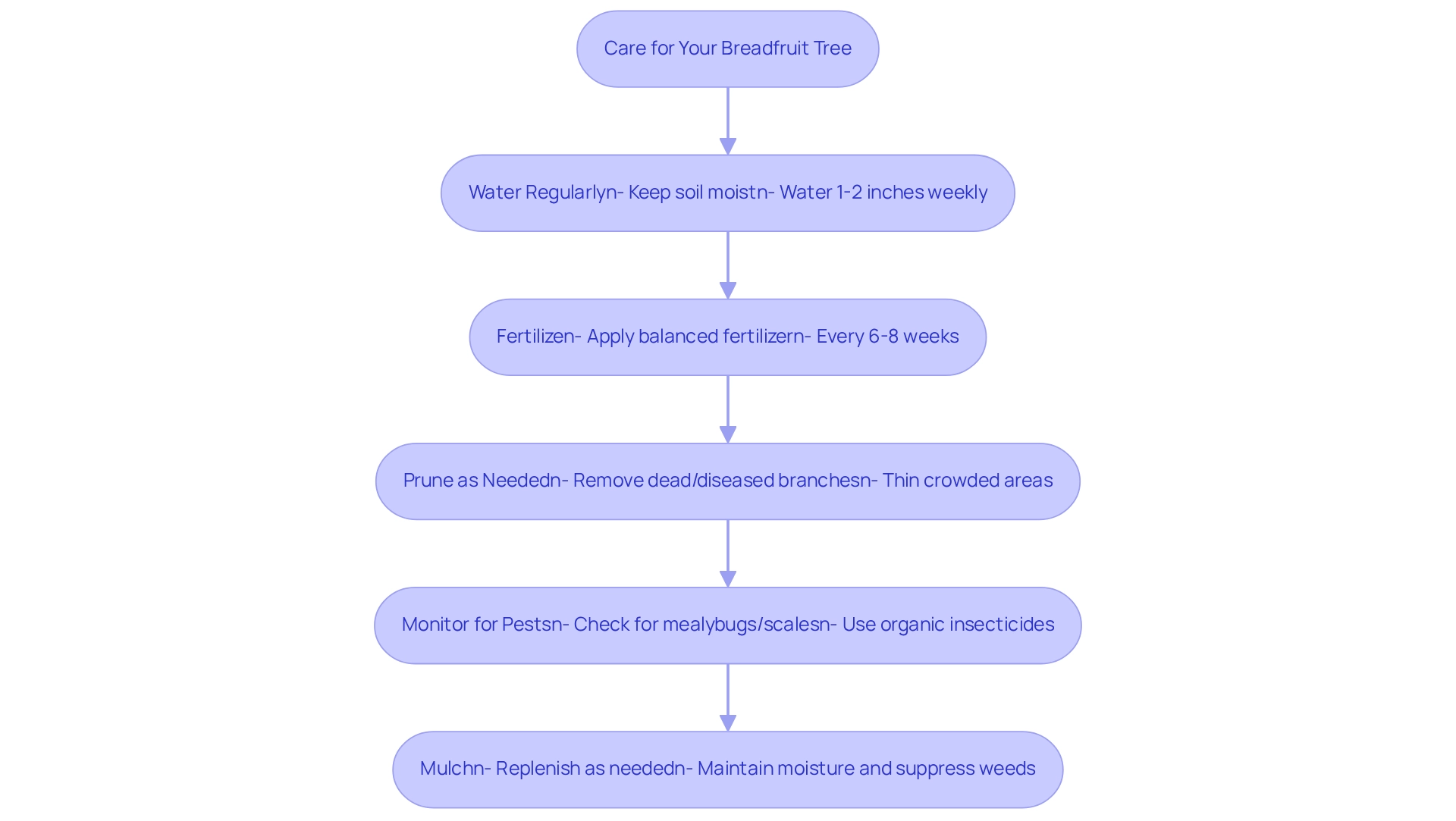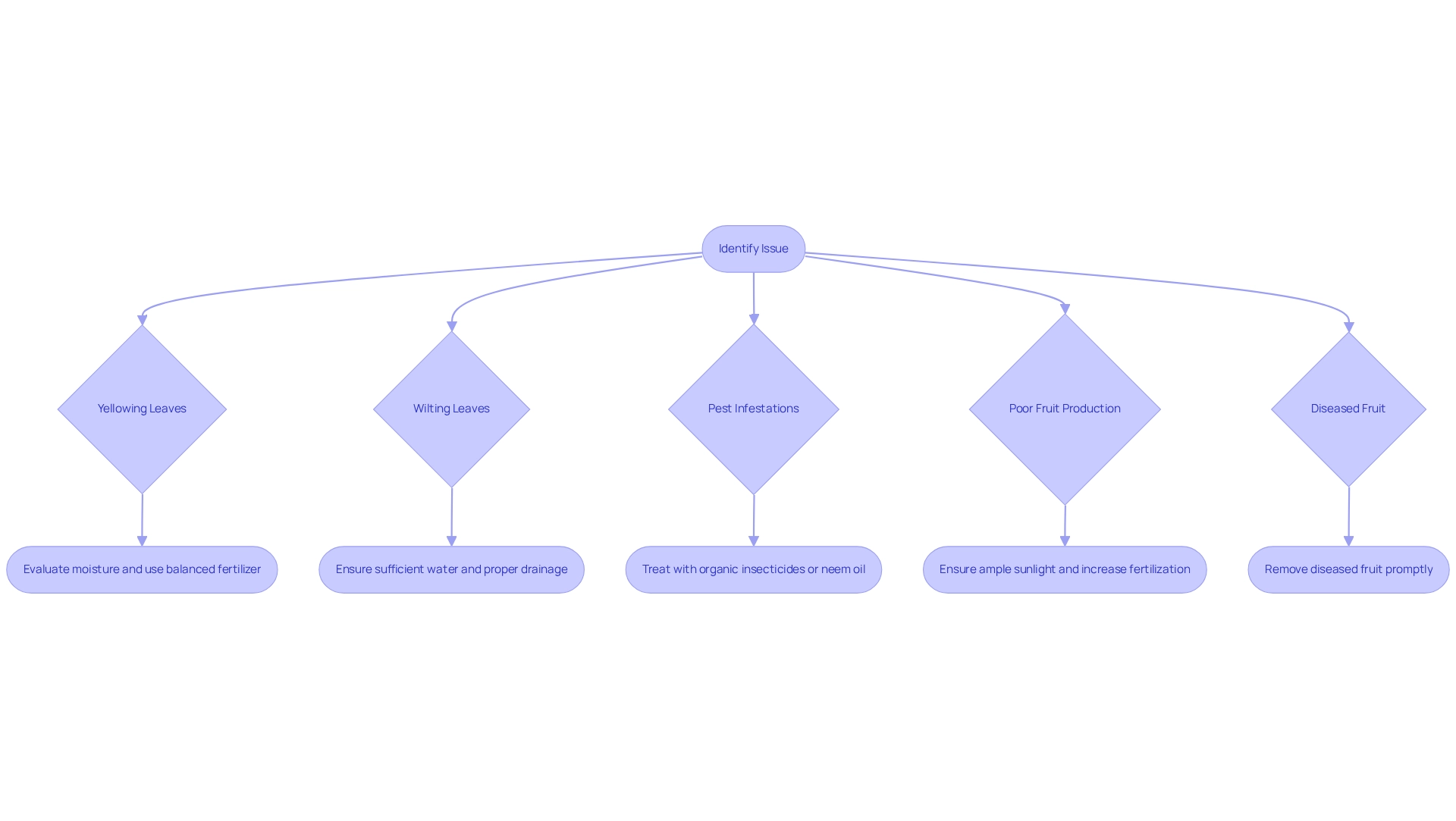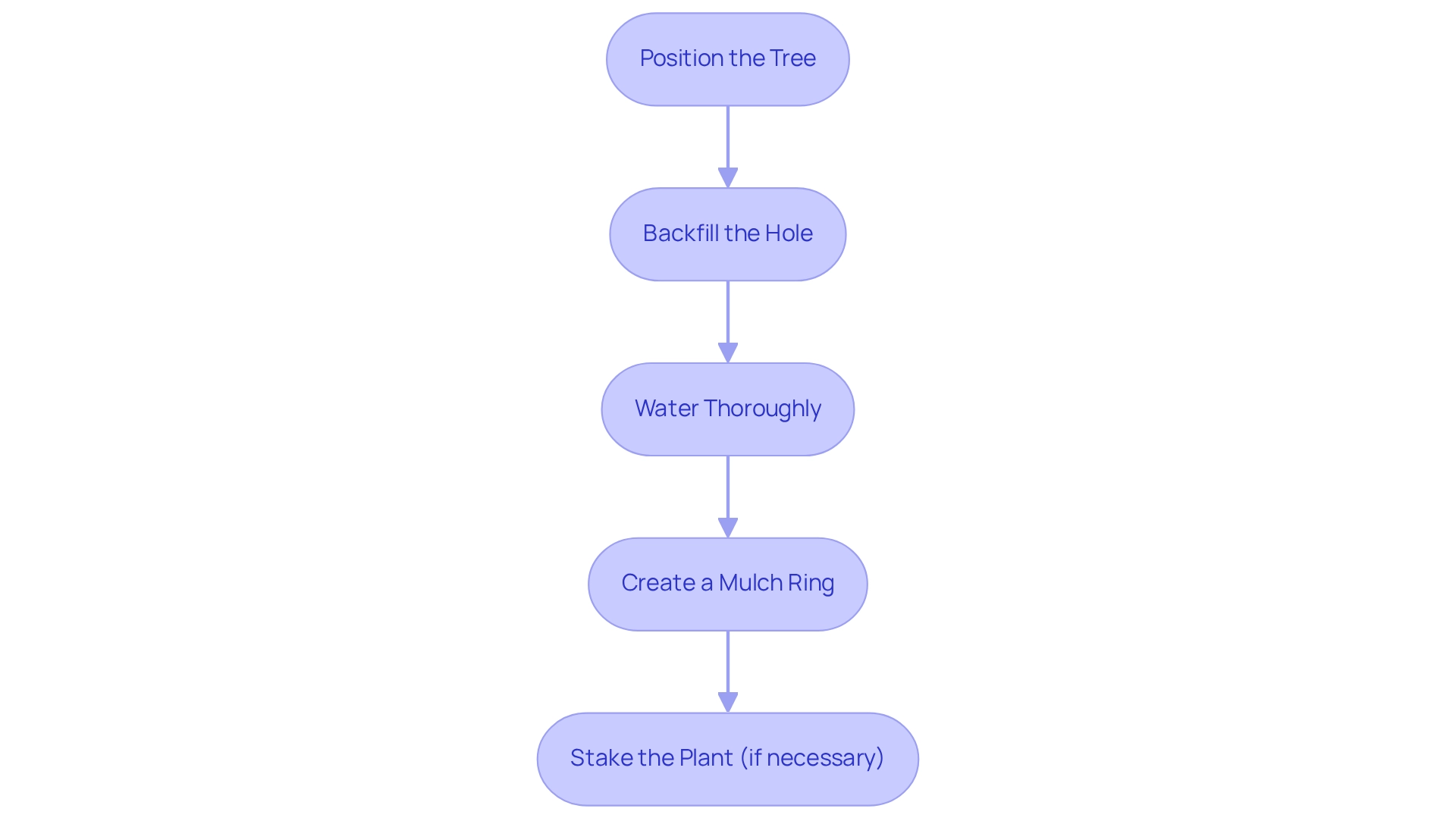Want to grow a tropical tree that not only adds beauty but also provides sustainable, starchy fruit? The Breadfruit Tree is your answer—fast-growing, low-maintenance, and deeply rewarding.
- Gather the necessary tools to set yourself up for success.
- Prepare the planting site, ensuring it meets the needs of your future tree.
- As you plant, think about the care and attention it will require.
- Caring for your tree involves regular watering, fertilization, and ensuring it receives proper sunlight and soil conditions.
- Lastly, be proactive in troubleshooting common issues that may arise along the way.
👉 Start your breadfruit journey today with a Florida Breadfruit Tree from Everglades Farm.

1. Gather Essential Tools and Materials
- Shovel: This tool is crucial for excavating the planting hole, ensuring the correct depth for optimal growth.
- Garden rake: A handy tool for leveling the ground and removing debris, it helps create a clean planting area.
- Watering can or hose: Essential for irrigating your plant after planting, this helps establish strong roots.
- Mulch: Organic options like wood chips or straw retain moisture and suppress weeds, promoting healthy growth.
- Compost: This enriches the soil with nutrients, creating a rich habitat for your plant.
- Fertilizer: A balanced fertilizer specifically for fruit-bearing plants enhances growth and fruit production.
- Gloves: Protect your hands while working, ensuring comfort and safety during the planting process.
- Trowel: Ideal for planting smaller seedlings or adjusting soil around the roots, it allows for precise care.

2. Prepare the Planting Site
- Choose a Sunny Location: It’s important to find a spot that basks in at least 6-8 hours of direct sunlight each day. Adequate sunlight is crucial for optimal growth, and understanding this can help you feel more confident in your gardening choices.
- Clear the Area: Take a moment to eliminate any grass, weeds, or debris within a 3-foot radius of the planting site. This helps minimize competition for nutrients and water, allowing your tree to thrive.
- Evaluate the Ground: Check the pH of your soil, aiming for a range of 6.0 to 7.0, which is slightly acidic to neutral. If it falls outside this range, don’t worry—amending the soil with compost can enhance its suitability for the breadfruit tree. This pH range is essential for the healthy growth of your plant.
- Dig the Hole: Create a hole that is twice the width and the same depth as the base of the plant. This ensures ample space for root expansion and promotes healthy growth, setting your tree up for success.
- Enhance Drainage: If your soil is dense clay, consider incorporating sand or perlite to improve drainage. This prevents waterlogging, which can hinder your plant’s growth.

3. Plant the Breadfruit Tree
- Position the Tree: Begin by centering the tree in the hole, ensuring the top of the root ball is level with the surrounding ground. Choose a sunny spot with good drainage; this is crucial for healthy growth.
- Backfill the Hole: Gradually fill the hole with the original earth, mixing in compost to enhance the soil. Gently compress the earth around the roots to remove any air gaps, which is essential for your plant's establishment and overall health. It’s important to aim for slightly acidic to neutral soil, as this is optimal for growth.
- Water Thoroughly: After backfilling, give your plant a deep watering to help settle the soil and provide essential moisture to the roots, which promotes better survival rates. Remember, watering saplings right before planting is critical for their success. Keep the soil consistently moist, especially during dry spells, to prevent stress.
- Create a Mulch Ring: Form a mulch circle around the base of the plant, about 3 inches thick. This will help maintain moisture and prevent weeds from taking over, creating a nurturing environment for your plant. Mulching is beneficial as it regulates soil temperature and moisture levels.
- Stake the Plant (if necessary): If your plant is tall or in a windy area, consider staking it for support until it establishes a strong root system. This is especially important for young breadfruit trees, which can be vulnerable to wind damage.
4. Care for Your Breadfruit Tree
-
Water Regularly: It’s essential to keep the soil consistently moist, especially during the first year. Water deeply once or twice a week, adjusting based on rainfall. Remember, tropical fruit plants typically need an average of 1-2 inches of water weekly, depending on the climate.
-
Fertilize: Applying a balanced fertilizer every 6-8 weeks during the growing season will support healthy growth. Regular feeding not only ensures optimal fruit production but also promotes a stronger, more resilient plant. Keep in mind that while fertilizer is important, it cannot compensate for poor management—overall care practices are essential.
-
Prune as Needed: Don’t hesitate to remove any dead or diseased branches and thin out crowded areas. This improvement in air circulation is vital for preventing disease and encouraging healthy growth.
-
Monitor for Pests: Regularly check for signs of pests like mealybugs or scale. If you spot any, using organic insecticides can help manage infestations effectively. For passion fruit vines, be especially vigilant for passion vine hoppers, which can damage the leaves. Consider organic methods to control these pests, such as introducing beneficial insects or using insecticidal soap, as outlined in our guide on managing passion vine hoppers.
-
Mulch: Replenishing mulch as needed is a great way to maintain moisture and suppress weeds. Efficient mulching techniques not only promote healthy root growth but also improve substrate enrichment and temperature control, aiding in overall plant vitality. According to a case study named 'Mulching and Its Benefits,' mulching plays a crucial role in moisture retention and ground health.

5. Troubleshoot Common Growing Issues
- Yellowing Leaves: This often signals overwatering or a nutrient deficiency. Take a moment to evaluate the moisture content, and consider using a balanced fertilizer to replenish those vital nutrients.
- Wilting Leaves: If you notice wilting, it can indicate underwatering or root rot. Ensure your plant receives sufficient water and that the soil has proper drainage to prevent waterlogging, which can be detrimental.
- Pest Infestations: If pests are present, don’t worry—treat your plant with organic insecticides or neem oil. This way, you can effectively manage the infestation without harming the environment, keeping your garden safe.
- Poor Fruit Production: A low fruit yield may result from insufficient sunlight or nutrient deficiencies. Ensure your plant is positioned to receive ample sunlight, and consider increasing the frequency of fertilization. Additionally, think about incorporating this tropical fruit into baked items to expand its range of use and decrease postharvest losses, promoting an emphasis on quality and yield.
- Diseased Fruit: It’s essential to promptly remove any diseased fruit to prevent the spread of infection. This step is crucial for maintaining the overall health of your plant and ensuring its vitality.

🚨 For more help, our team is always here—visit Everglades Farm for resources and support.
Conclusion
🌴 Let’s Grow Something Tropical Together
Breadfruit is more than a tropical tree—it’s a commitment to sustainability, food security, and your own lush backyard oasis.
👉 Get started now with your Breadfruit Tree from Everglades Farm — fast shipping and expert care included.





0 comments